Roman architecture took over right where the builders from ancient Greece left off after the decline of Greek civilization. But unlike their predecessors, the Romans placed far more emphasis on the practicality of their architectural designs.
This was a major departure from contemporary practices which had always placed the focus on a structure’s exterior design and aesthetic appeal. The Greeks, Persians, and Egyptians before them created many monumental pieces of architecture, but their magnificence was limited to the exterior only.
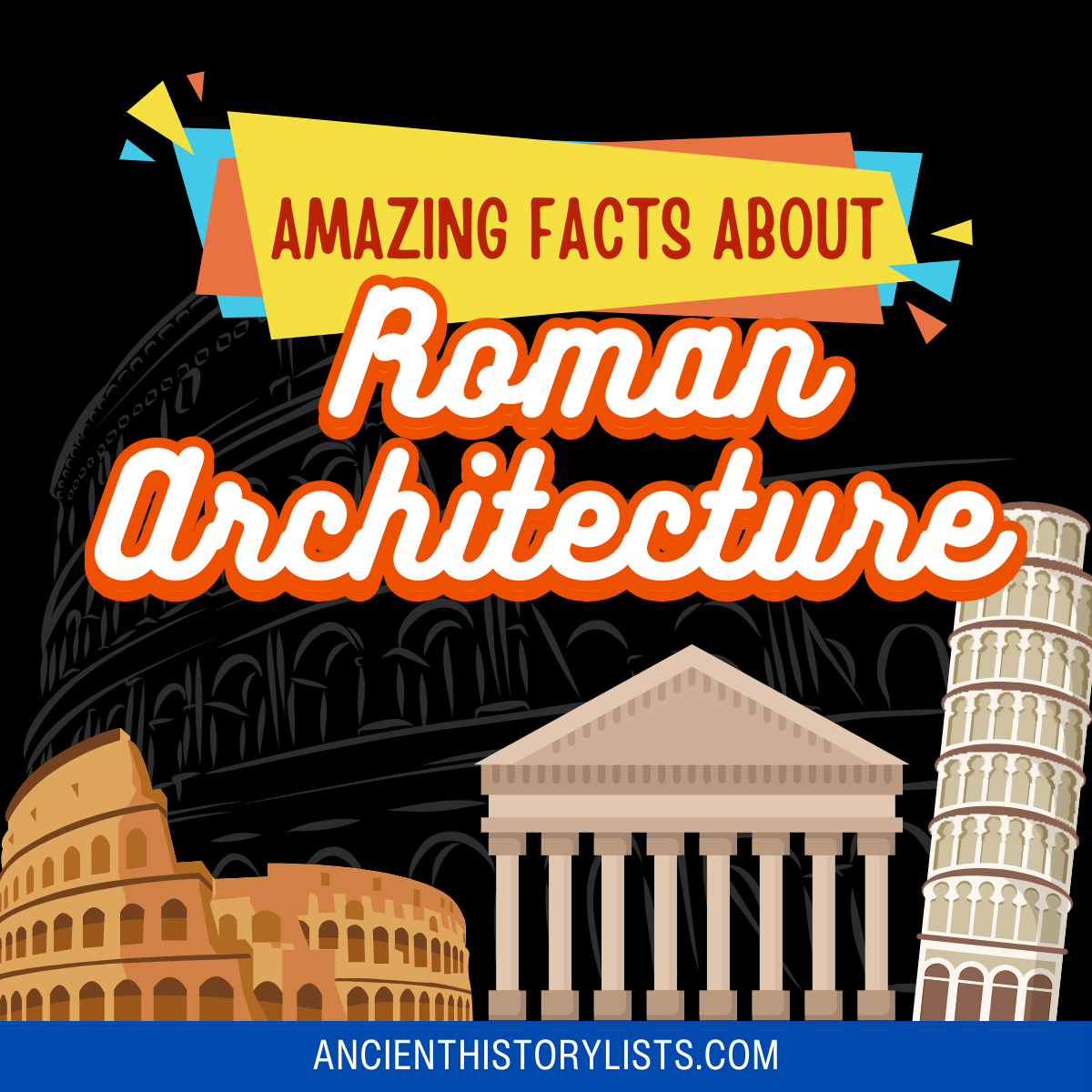
With the discovery of concrete, arches, and other engineering marvels during the ancient Roman era, Roman builders could now build majestic structures with interiors that were previously deemed impractical or impossible.
Here is a list of the top 10 most magnificent ancient Roman pieces of architecture that reflect the engineering ingenuity of the Romans:
10. Arch of Septimius Severus
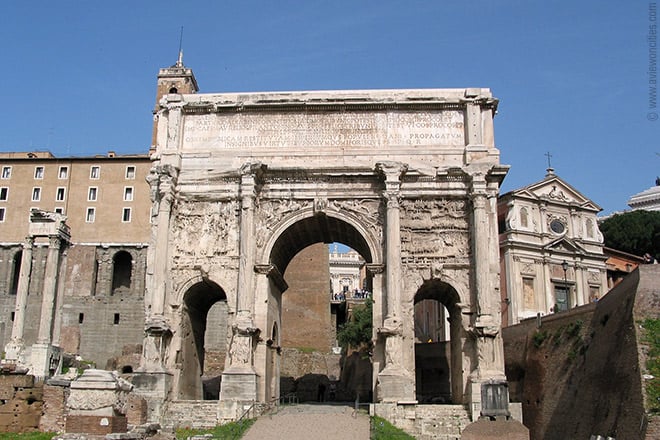
This monumental arch was constructed in 203 AD in recognition of the unprecedented Roman victories over the Parthians in the dying years of the second century. It was under Septimius Severus’ rule that Rome was able to successfully suppress a raging civil war among its neighboring states. But the icing on the cake came when he immediately declared war on the Parthian Empire and brought the Parthians to their knees. In recognition of his achievements, the Roman Senate had one of the most beautifully decorated triumphal arches erected on his return to Rome.
Originally, it had a bronze gilded inscription as homage to Septimius and his two sons Caracalla and Geta for having restored and expanded the Roman Republic. It was a unique triumphal monument by all standards in contemporary Rome. Even today, despite some heavy damage, it stands as a lasting reminder of the once flamboyant Roman Republic.
9. Temples of Baalbek
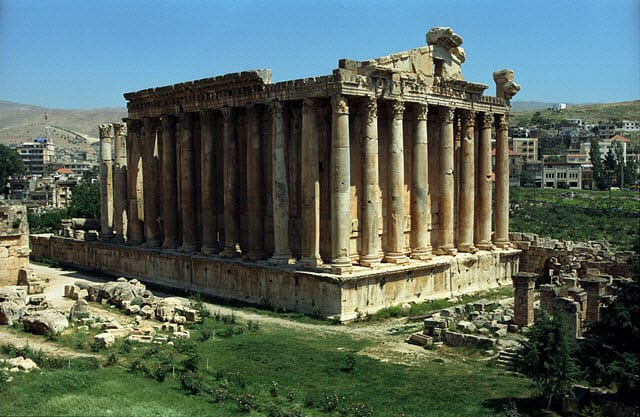
A major attraction and a remarkable archaeological site in present-day Lebanon, Baalbek is considered as one of the most spectacular wonders of the ancient world. It also happens to be one of the largest, most prestigious, and most well-preserved Roman temples built in the ancient Roman era. The first of the Baalbek temples was constructed in the first century BC and over the next 200 years, the Romans built three more, each dedicated to the gods Jupiter, Bacchus, and Venus respectively.
The largest temple among them was the Temple of Jupiter, which had 54 huge granite columns, each one around 70 feet (21 meters) tall. Although only six of these columns survive today, their sheer scale is enough to show the majesty of the Baalbek temples. After the fall of Rome, the Baalbek temples suffered from theft, war, and natural disaster, but they are still able to conjure up the aura of magnificence to this day, with thousands of people visiting the famous Baalbek temples every year.
8. Library of Celsus
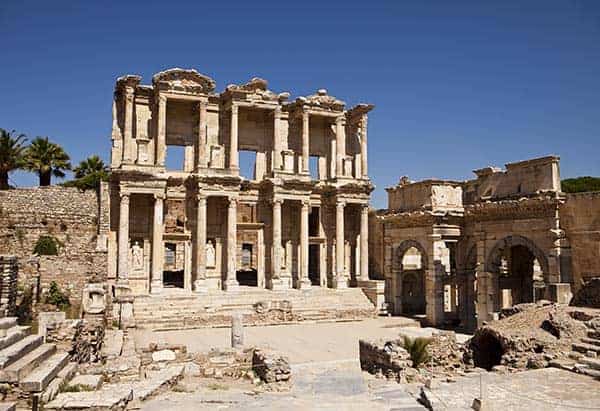
Named after the famous former governor of the city of Ephesus, the Library of Celsus was actually a monumental tomb dedicated to Gaius Julius Celsus Polemaeanus. This amazing piece of Roman architecture was constructed on the orders of Celsus’ son Galius Julius Aquila. It was also a popular repository for important documents and at the height of its use, the Library of Celsus housed over 12,000 different scrolls.
It had beautifully carved interiors and equally mesmerizing architectural designs on the exterior, making it one of the most impressive buildings in the ancient Roman Empire. The architecture of the library is typically reminiscent of the building style that was popular during the rule of Emperor Hadrian.
The entire structure is supported by a nine-step podium which is 69 feet (21 meters) long. The surviving facade of the building retains its amazing decorations and relief carvings which only add to the grandeur of the structure.
7. Pont du Gard
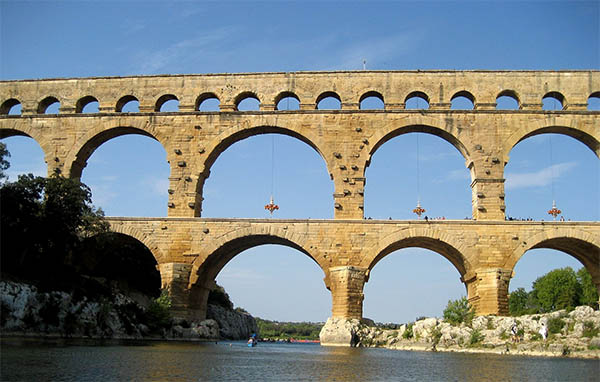
The Pont du Gard, literally the Gard bridge, is one of the few surviving aqueducts constructed during the Roman Empire. Located in present-day southern France, it was built somewhere in the middle of the first century AD.
This aqueduct was constructed without the use of any mortar; Roman engineers built this three-story masterpiece by fitting together massive blocks of precisely cut stones. These huge blocks of stone weighed up to six tonnes each, and the bridge itself measured up to 1180 feet (360 meters) at its highest point.
The Pont du Gard was a pivotal structure in an aqueduct that stretched over 31 miles (50 kilometers) in length. The success of this engineering marvel was essential in making the entire aqueduct functional because it supplied water to the city of Nimes.
In the end, the Roman engineers pulled off an outstanding feat of contemporary engineering and hydraulics. The Pont du Gard has been used as a conventional bridge throughout the Middle Ages, right up until the 18th century.
6. Aqueduct of Segovia
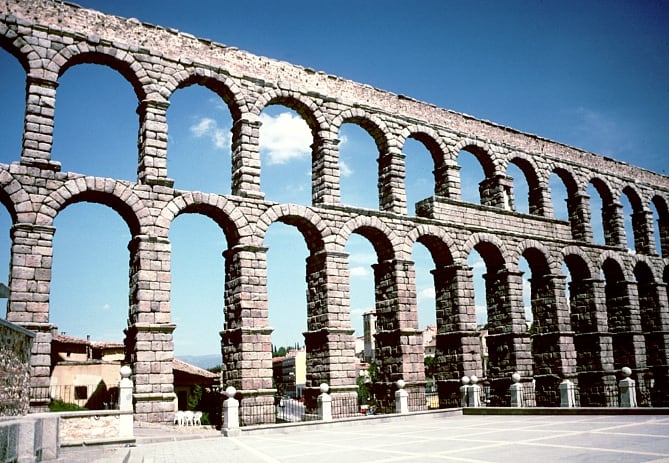
Located on the Iberian peninsula, the Aqueduct of Segovia still retains its structural integrity to this day, making it one of the best-preserved pieces of architecture from ancient Rome. It was built somewhere around 50 AD to facilitate the flow of drinking water from the River Frio to the city of Segovia. On its completion, it was an unprecedented 16km-long structure built using around 24,000 giant blocks of granite.
Just like the Pont du Gard, Roman engineers built the entire structure without any mortar. With 165 arches, all of which are over 30 feet (9 meters) in height, this architectural phenomenon has been a symbol of Segovia for centuries.
The aqueduct had to go through an extended period of reconstruction during the 15th and 16th centuries after years of use and structural neglect. By the 1970s and 1990s, some urgent and necessary conservation action was undertaken to preserve the monument and its glory.
5. Maison Carrée
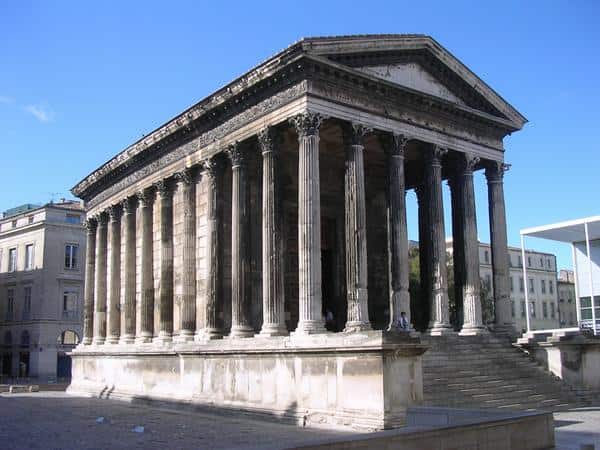
Maison Carrée is the only temple constructed in the time of ancient Rome that is completely preserved to this day. This marvel of Roman engineering was built around 16 BC in the city of Nimes. Maison Carrée is an architectural gem that stands 49 feet (15 meters) tall and runs along a length of 85 feet (26 meters).
It was built by Roman General Marcus Vipanius Agrippa in memory of his two sons who died young. With the imminent fall of the Roman Empire on the horizon, Maison Carrée was given a fresh lease of life when it was turned into a Christian church in the fourth century.
This decision spared this majestic temple from the neglect and destruction faced by many other Roman monuments and landmarks. Since then, it has been used for various purposes such as a town hall, stable, and storehouse. At present, it is a museum.
4. Diocletian’s Palace
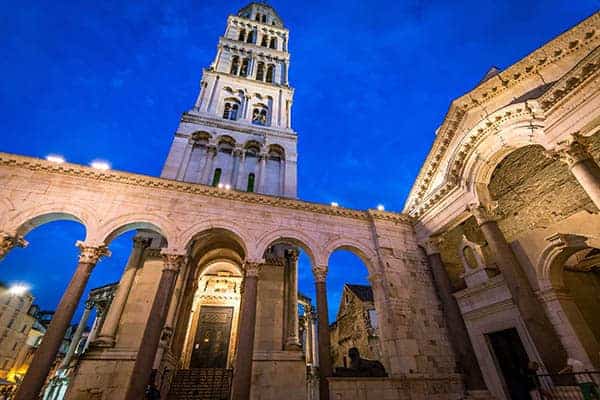
This marvelous building was built by the famous Roman emperor Diocletian in preparation for his retirement. Diocletian was the first Roman emperor who voluntarily retired from his position, citing declining health issues. After his retirement on May 1, 305 AD, he went on to spend a quiet life in this majestic palace.
The palace covers around 705 feet (215 meters) from east to west and its walls are about 85 feet (26 meters) high. At a time when the Roman civilization was in transition from the classical to the medieval era, architects were able to incorporate different building styles that had been used over the ages. It also helped that Christians used the palace as a cathedral in the Middle Ages, preserving its structural integrity throughout the medieval period.
At present, Diocletian’s Palace is one of the most popular archaeological attractions in Croatia, and also a world heritage site as declared by UNESCO.
3. Amphitheater, Nimes
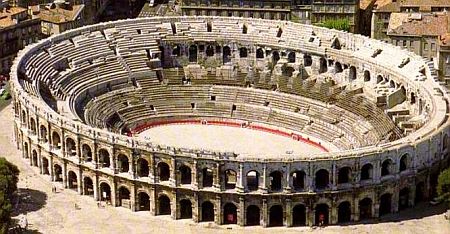
When this famous amphitheater was built in the city of Nimes, the city was known by the name of Nemausus. From around 20 BC, Augustus started to populate the city and give it a structure more akin to a typical Roman state.
It had a number of splendid buildings, a surrounding wall, more than 200 hectares of land, and a majestic theater at its heart. Better known as the Arena of Nimes, this astoundingly large theater had a seating capacity of around 24,000, effectively making it one of the biggest amphitheaters in Gaul.
It was so large that during the Middle Ages, a small fortified palace was built within it. Later, somewhere around 1863, the arena was remodeled into a huge bullring. It is still used to host annual bullfights to this day.
2. Pantheon
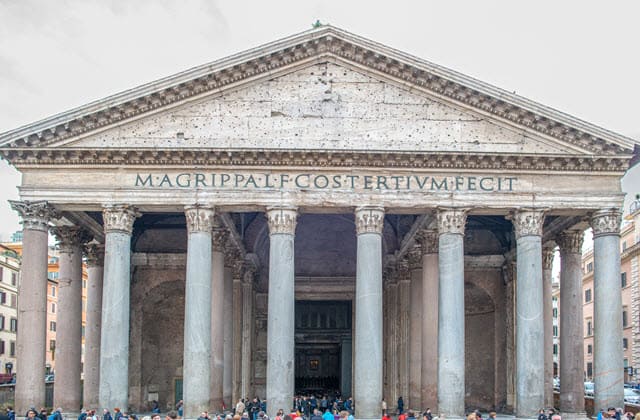
The Pantheon is arguably the most well-preserved architectural marvel from the ancient Roman era. Unlike many other contemporary Roman temples that were almost always dedicated to particular Roman deities, the Pantheon was a temple for all the Roman gods. The construction of this temple was completed in 125 AD during the rule of Hadrian.
The Pantheon has a large circular portico that opens up to a rotunda. The rotunda is covered by a majestic dome that adds a whole new dimension to its grandeur. The sheer size and scale of this dome is a lasting testimony to the skills of ancient Roman architects and engineers.
The fact that this astounding piece of engineering still stands to this day, surviving 2,000 years’ worth of corrosion and natural disasters, speaks volumes for its build quality.
1. Roman Colosseum
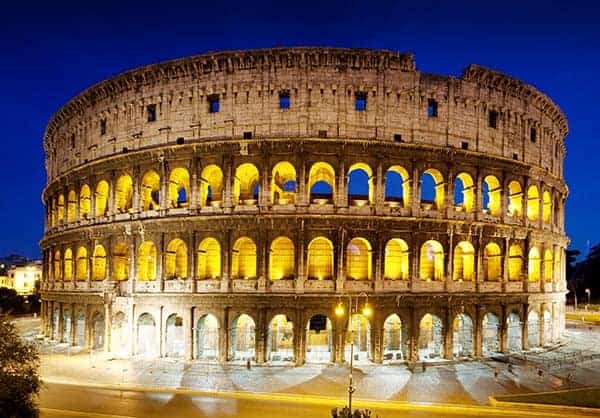
When the famous amphitheater, the Colosseum, was built in ancient Rome, it had an area of 620 by 523 feet (189 by 159 meters)), making it the largest amphitheater of its time. The construction of the Colosseum, the largest and most popular ancient Roman monument, began during the reign of Emperor Vespasian in 72 AD. By the time it was finished by his son Titus in 80 AD, a never-before-seen amphitheater with a seating capacity of over 50,000 was ready for use.
It could accommodate such large numbers of spectators that as many 80 different entrances were installed. It is said that its opening ceremony – the grandest of all spectacles – lasted for about 100 days. In that time, about 5,000 animals and 2,000 gladiators fought to their deaths in an unprecedented extravaganza of gladiatorial and bestiarius battles.
See also:
Conclusion
In many ways, ancient Roman architecture is very different from the buildings and monuments of ancient Greece and Egypt. Of course, Roman architecture was as grand in terms of scale and magnificence, but it was also far more practical in comparison to previous architectural designs.
With the advent of Roman concrete, arches, and other ingenious engineering ideas, the ancient Romans were able to take their architecture to new heights. We only have to look at monuments like the Colosseum, the Pantheon and the spectacular aqueducts that have survived a couple of millennia to see how well built these structures were.
Thank you for your blog. I am currently completing my doctorate degree, and required info about ancient Roman structures. I appreciate your writing style, photos, and historical acumen.
Thank you for your blog. I am currently completing my doctorate degree, and required info about ancient Roman structures. I appreciate your writing style, photos, and historical acumen.
Thank you for your blog. I am currently completing my doctorate degree, and required info about ancient Roman structures. I appreciate your writing style, photos, and historical acumen.
Thank you for your blog. I am currently completing my doctorate degree, and required info about ancient Roman structures. I appreciate your writing style, photos, and historical acumen.